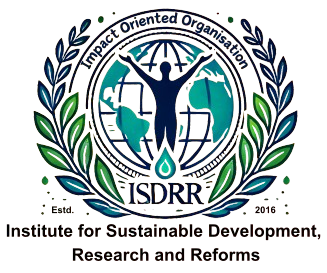
Collaboration for Sustainable Development Goals: Uniting for a Sustainable Growth and Future
The Sustainable Development Goals (SDGs), launched by the United Nations in 2015, provide a comprehensive framework to achieve a sustainable, inclusive, and equitable world by 2030. Covering critical areas like poverty eradication, quality education, climate action, and gender equality, the SDGs represent an ambitious global vision. However, their success hinges on more than just governmental action; it requires robust collaboration across sectors, geographies, and communities.
The Role of Collaboration in SDGs
SDG 17: Partnerships for the Goals underscores the importance of cooperation. Global challenges such as climate change, poverty, and inequality are deeply interconnected and complex, making it impossible for any single entity to address them in isolation. Effective collaborations leverage the strengths, resources, and expertise of diverse stakeholders, enabling innovative and scalable solutions. These partnerships ensure shared responsibility and inclusivity, ensuring no one is left behind in the journey toward sustainable development.
Key benefits of collaboration include:
- Pooling resources: Combining financial, technical, and human resources to address gaps in SDG implementation.
- Knowledge sharing: Facilitating the exchange of ideas, technology, and best practices to drive impactful interventions.
- Promoting accountability: Encouraging collective responsibility through multi-stakeholder partnerships and transparent processes.
Examples of Effective Collaboration
- Government and Private Sector Partnerships: Governments and businesses can collaborate to promote sustainable practices. For instance, corporations can invest in renewable energy projects while governments provide regulatory support and incentives.
- Cross-Sector Alliances: Partnerships between civil society organizations, academic institutions, and corporations bring diverse perspectives. NGOs working with businesses can enhance supply chain sustainability while addressing community needs.
- International and Regional Cooperation: Transboundary issues like climate change and biodiversity loss require the collaboration of international organizations and regional blocs, fostering coordinated action.
- Grassroots Engagement: Local communities play a vital role in creating sustainable solutions. Grassroots partnerships ensure that their voices are heard, promoting solutions tailored to their specific needs and challenges.
Keys to Successful Collaboration
Effective partnerships involve:
- Inclusion: Ensuring all stakeholders, including marginalized communities, participate meaningfully.
- Transparency: Building trust through open communication and accountability mechanisms.
- Alignment of Goals: Harmonizing efforts toward shared objectives to enhance impact and prevent redundancy.
- Innovation: Leveraging technology and novel approaches to address challenges efficiently.
Challenges in Collaboration
Despite its benefits, collaboration is not without obstacles:
- Divergent priorities: Different stakeholders often have conflicting interests.
- Power imbalances: Unequal influence among partners can hinder meaningful engagement.
- Resource constraints: Limited financial or technical resources can slow progress.
Addressing these challenges requires fostering trust through dialogue, empowering smaller stakeholders, and establishing clear frameworks for monitoring and evaluation to ensure accountability.
Conclusion
Achieving the SDGs is a complex and challenging journey, but collaboration provides a powerful tool to navigate it. By uniting governments, businesses, civil society, and individuals, we can amplify efforts, scale solutions, and accelerate progress toward a sustainable future. As 2030 approaches, fostering inclusive, transparent, and action-oriented partnerships will be essential to transforming the SDG vision into reality. Through united efforts, we can build a world that benefits both present and future generations.
